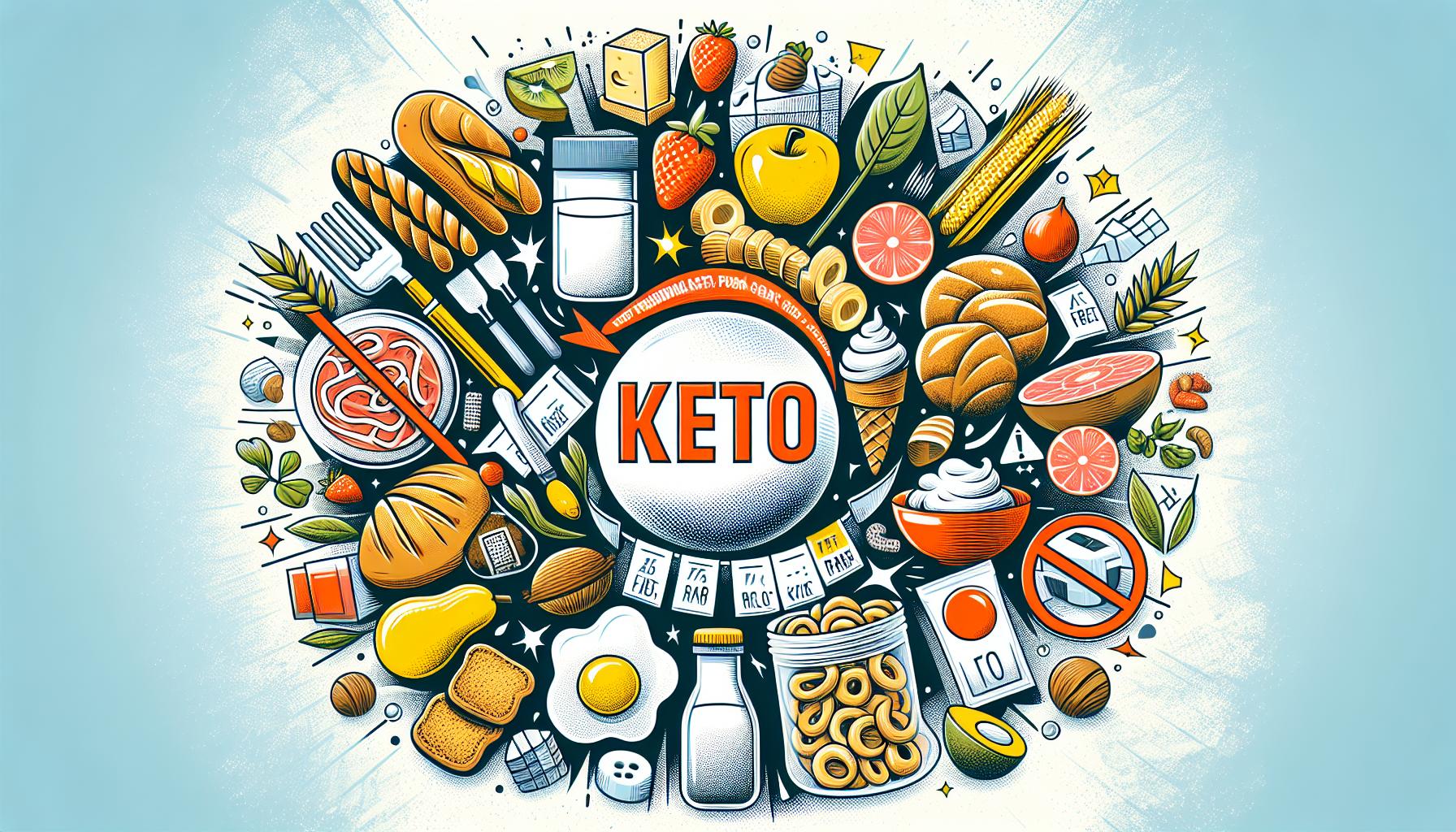
The Ketogenic Unplugged: Foods You Cannot Have On A Keto Diet
Keto diet, an ultra-popular regimen famed for making a dent in unwanted pounds, calls for a well-required culinary shift. But what precisely does this dietary transition entail? What exactly are the specific foods to toss out from your kitchen cabinets? Well, buckle up as we delve into an immense, informational journey to identify what foods you cannot eat on a keto diet.
The ketogenic eating plan is a low-carb, high-fat approach that involves drastically reducing your carbohydrate intake and filling up on fats. This drastic reduction causes your body to enter a metabolic state called ketosis, burning fat for fuel instead of carbs. But the journey isn’t about engorging oneself in all things fatty. Certain provisions are unfortunately off the table, as we’re about to explore.
The Sugar Saga: Breaking Bonds with Sweets
All sugary delights, as scrumptious as they may be, have to part ways with your eating plate while on a Keto diet. This includes your favorite cookies, doughnuts, ice cream, and most desserts. However hard this might seem at the onset, remember that you’re trading short-term pleasure for long-term wellness.
Hidden Sugar Culprits
Unbeknownst to many, sugar lurks in the most unexpected places. Processed foods and drinks such as sodas, canned goods, sauces, and even salad dressings, will have to be swept off your shopping list. So next time you reach for that seemingly harmless store-bought ketchup, think again.
Grains and Starches: Say Sayonara
Bread, pasta, pizza… these comfort foods make many of our hearts flutter. Unfortunately, they tend to be high in carbs, which becomes a no-no when following the keto diet rigorously. But don’t despair – keto-compliant alternatives abound, uplifting your spirits as you navigate this dietary journey.
The Struggle with Starchy Vegetables
Not all vegetables make it to the keto-friendly list. Certain ones, especially the root and tuberous kind like potatoes, sweet potatoes, carrots, and parsnips, must be avoided due to their high starch content. It’s all about making wise choices, just as we do in life.
Fruits and Legumes: Bidding Adieu
Contrary to popular belief, fruits aren’t universally welcome on a Keto diet because of their fructose content. While the natural sugars are healthier than synthetic sweeteners, they still count as carbs. Similarly, while legumes are undeniably beneficial, they are, regrettably, too high in carbs for the keto lifestyle.
Exceptions to Every Rule
It’s not all gloom and doom – berries and avocados have received the green light from the keto world. Enjoy these nutritional powerhouses, albeit in moderation. Just like in a dance, it’s all about striking the right balance.
Wrapping Up: It’s Not a Goodbye, It’s a See You Later
Keto is less of a diet, but more of a shift in lifestyle habits. Yes, we’ve parted ways with numerous foods. Yet, we’ve also embraced an exciting array of flavorful alternatives, fostering a newfound relationship with food. Now you have the answer to the age-old question: What Foods Can You Not Eat On a Keto Diet? Remember, each goodbye brings a fresh hello, and every restriction brings a welcomed freedom – the freedom of a healthier you.
Frequently Asked Questions
1.
Is popcorn allowed on a keto diet?
Popcorn is typically high in carbs and therefore not suitable for a ketogenic diet.
2.
Can I eat chocolate on keto?
Regular chocolate is off-limits, but there are varieties of keto-friendly chocolate available with minimal to no sugar content.
3.
Can you have milk on keto?
Milk has a higher carb count than other dairy products and is typically not recommended.
4.
Are bananas keto-friendly?
Bananas, along with most fruits, are generally not considered keto-friendly due to their high sugar content.
5.
Can you eat rice on keto?
Rice, and other grains, are not included in the keto diet due to their high carb count.


